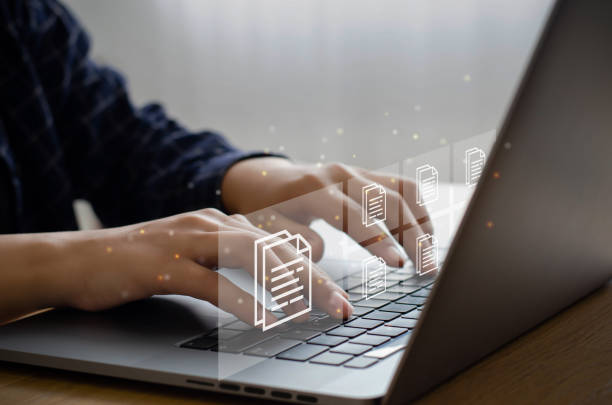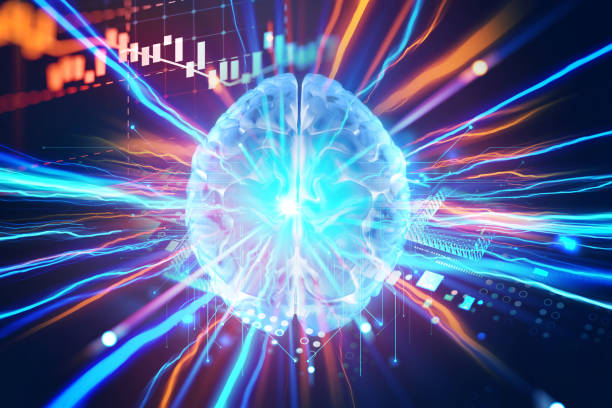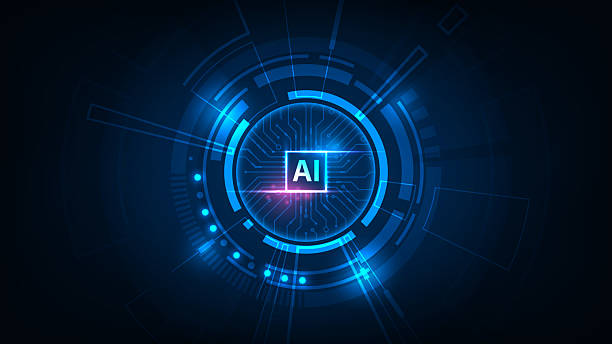On-Page SEO Basics and Its Importance in Ranking
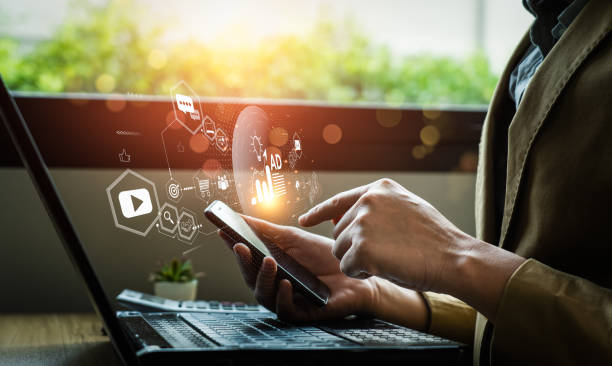
On-Page SEO refers to a set of actions and optimizations performed within your website and on its specific pages to improve its ranking in search engine results.
This approach is the foundation of any successful SEO strategy, and without it, even the strongest backlinks cannot guarantee success.
The importance of On-Page SEO lies in helping search engines better understand your page’s content, identify its main topic, and assess its relevance to keywords searched by users.
As Google’s algorithms become smarter every day, a deeper understanding of your content’s purpose and quality is crucial for them.
This section provides a complete explanation of what On-Page SEO is and why it should be taken seriously.
The primary goal of On-Page SEO is to create high-quality content and optimize technical page elements to provide an excellent user experience and be understandable to search engine crawlers.
These actions include optimizing titles, meta descriptions, URL structure, using heading tags, image optimization, internal linking, and improving page loading speed.
In essence, internal optimization means speaking directly to the search engine and conveying the right message about your content.
Without strong On-Page SEO, your efforts in other areas of SEO, such as off-page linking, will not be as effective.
This is a fundamental tutorial that helps you strengthen the foundations of your site’s SEO.
Are your e-commerce site visitors leaving before making a purchase? Don’t worry anymore! With Rasaweb’s professional e-commerce website design services, solve the problem of visitor-to-customer conversion forever!
✅ Significant increase in conversion rates and sales
✅ Unparalleled and attractive user experience
⚡ Contact us now for a free consultation!
Keyword Research for Effective On-Page SEO
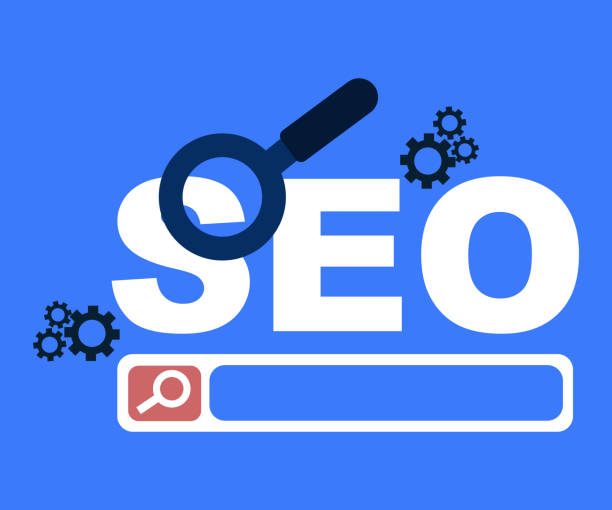
Keyword research is the backbone of any successful SEO campaign and is crucial for On-Page SEO.
This process goes beyond just finding words people search for; it involves understanding the search intent, search volume, competition level, and its relevance to your content.
To conduct a specialized and effective keyword research, you should use tools like Google Keyword Planner, Ahrefs, Semrush, or KWFinder.
These tools help you discover Long-Tail Keywords, which usually have less competition and offer higher conversion rates.
For instance, instead of solely focusing on “On-Page SEO,” you can target phrases like “best On-Page SEO methods 2024” or “advanced On-Page SEO techniques for educational websites.”
After identifying primary and secondary keywords, you should naturally and logically embed them into your page’s content, including the title, headings, body text, and meta descriptions.
Avoid keyword stuffing, as this not only harms your SEO but also diminishes user experience.
The goal is to create valuable content that answers user questions, with keywords acting as a guide for the search engine.
This provides a step-by-step guide to ensure that every page of your website is optimized based on the correct keywords.
Also, always look for keywords that align with users’ search intent, as Google places great importance on matching content with user intent.
Effective keyword research allows you to drive more targeted traffic to your website and increase your chances of ranking high in search results.
Optimizing Title and Meta Descriptions: First Steps

The Title Tag and Meta Description are the first elements users see on a Search Engine Results Page (SERP).
Precise optimization of these two elements plays a vital role in the Click-Through Rate (CTR) and, consequently, the success of your On-Page SEO.
The page title should be concise, appealing, and include the page’s primary keyword.
The standard length for a title is about 50 to 60 characters to display fully in the SERP.
An attractive title can persuade users to click on your link instead of competitors’.
For example, instead of “On-Page SEO,” a title like “Comprehensive Guide to On-Page SEO 2024: Improve Ranking and Site Traffic” is much more effective.
The meta description is a short, engaging summary of your page’s content displayed below the title in the SERP.
Although meta descriptions are not direct ranking factors, they significantly influence the click-through rate.
A good meta description should entice users to enter your page for more information.
Use primary and secondary keywords naturally in the meta description and try to keep it between 150 to 160 characters.
This is a practical tutorial for understanding the importance of these elements and how to optimize them.
By focusing on these points, you are practically laying the foundations of strong On-Page SEO.
Keep in mind that search engines might rewrite your meta description if they deem it irrelevant to the user’s search, so strive to provide the most accurate and appealing summary possible.
Using a Call to Action (CTA) in the meta description can also increase CTR.
This step is among the first and most important in correctly implementing On-Page SEO.
| Element | Best Practices | Description |
|---|---|---|
| Title Tag |
|
First thing users see in SERP. Direct impact on CTR and search engine’s understanding of page content. |
| Meta Description |
|
Further explanation of content. Indirect impact on ranking by increasing CTR. Encourages users to click. |
URL Structure and Quality Content for On-Page SEO

The URL (Uniform Resource Locator) structure is an important and often overlooked element in On-Page SEO.
An optimized URL should be short, readable, and include the page’s primary keyword.
This not only helps search engines better understand the page’s topic but is also clearer for users and can help improve click-through rates.
Avoid using special characters, meaningless numbers, and complex parameters in your URL.
For instance, instead of “yoursite.com/page?id=123&cat=blog”, use “yoursite.com/blog/onpage-seo-guide”.
This is the most specialized way to structure links.
However, the backbone of any SEO strategy is quality content.
Your content must be unique, comprehensive, accurate, and valuable, fully addressing the user’s search intent.
Longer and deeper content that covers a topic from various angles usually performs better in rankings, provided that every word in it adds value.
Avoid creating “thin” or low-value content produced merely to fill pages.
Quality content should build authority and trust among users and search engines.
To this end, use reputable sources, cite statistics, and provide expert opinions.
On-Page SEO and content quality go hand in hand.
Great content without internal optimization may never be seen, and excellent optimizations on poor content will be useless.
This is a precise analysis of the close relationship between URL and content.
Focusing on these two aspects can significantly increase your website’s visibility in search results and create a strong foundation for your sustainable On-Page SEO.
Does your company’s website perform as befits your brand? In today’s competitive world, your website is your most important online tool. Rasaweb, specializing in professional corporate website design, helps you to:
✅ Build customer credibility and trust
✅ Convert website visitors into customers
⚡ Get a free consultation now!
Using Headings and HTML Tags in On-Page SEO
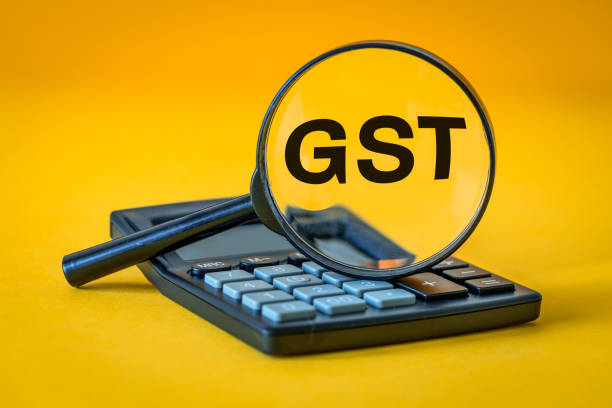
Correct use of heading tags (H1 to H6) and other HTML tags is crucial for On-Page SEO and content readability.
The H1 tag should be used as the main title of the page and appear only once per page.
This tag is the most important element for search engines to understand the page’s main topic and should include your primary keyword.
After H1, use H2 tags for main sections and H3, H4, etc., for sub-sections within each section.
This hierarchy not only helps search engines understand your content structure but also improves user experience by breaking down long content into digestible sections.
This is a practical guide that helps you structure your content for both users and bots.
In addition to headings, using other HTML tags like the tag (bold) and (italic) for highlighting keywords and important phrases can also aid readability.
List tags (ul and ol) are useful for organizing information, and blockquote tags for displaying quotes.
Also, using short paragraphs and sufficient whitespace makes your content appear less dense and encourages users to continue reading.
The ultimate goal of On-Page SEO is to create content that is both semantically rich and structurally easy for humans and machines to understand.
By correctly implementing these elements, you are actively improving your site’s On-Page SEO and sending positive signals to search engines.
These actions are considered specialized On-Page SEO techniques that directly impact content understanding and, consequently, your ranking.
Optimizing Images and Page Loading Speed
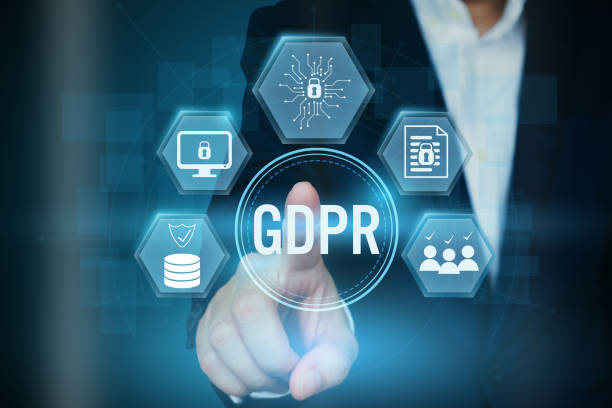
Images play an important role in a website’s visual appeal and keeping users on the page, but if not optimized correctly, they can significantly slow down page loading speed and harm your On-Page SEO.
To optimize images, first minimize their file size.
Use modern formats like WebP, which offer better compression while maintaining quality.
Perform image compression with online tools or CMS plugins.
More importantly, use appropriate Alt Text for each image.
Alt Text should be descriptive and include relevant keywords, as search engines cannot “see” images and rely on this text to understand their content.
This is a specialized component of On-Page SEO that is often overlooked.
Page Speed is also a crucial Google ranking factor.
Slow pages provide a poor user experience and can increase the Bounce Rate.
To improve loading speed, in addition to image optimization, you should take other measures: use a CDN (Content Delivery Network), compress files (Gzip), browser caching, minimize CSS and JavaScript code, and eliminate render-blocking resources.
You can analyze your page speed with tools like Google PageSpeed Insights or GTmetrix and apply their recommendations for improvement.
Fast loading speed not only enhances user experience but also sends a positive signal to search engines about your website’s quality.
These two factors, image optimization and page speed, directly impact the effectiveness of your On-Page SEO and should be an integral part of your optimization strategy.
This section provides a comprehensive guide for achieving better performance in these areas.
Internal Linking: A Way to Strengthen On-Page SEO
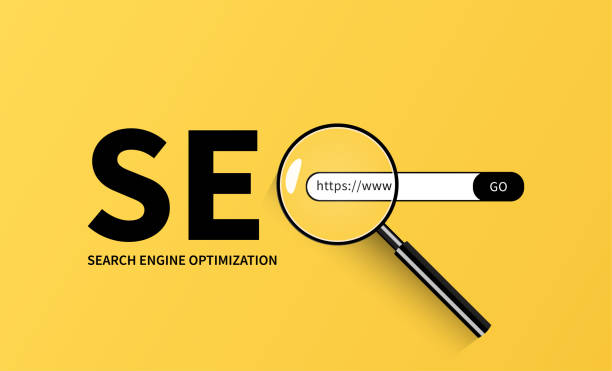
Internal linking is the process of linking from one page on your website to another page on the same website.
This is a powerful and vital strategy for strengthening On-Page SEO with numerous benefits:
- Distribution of Page Authority and Link Equity: Internal links help the flow of SEO “power” (known as Link Equity) throughout your website.
Pages that receive links from high-authority pages can achieve better rankings. - Improved Search Engine Crawling: Internal links help Google bots discover and index more pages on your website.
A strong internal linking structure acts like a roadmap for the search engine. - Enhanced User Experience: Relevant internal links encourage users to spend more time on your website and discover more related content, which in turn helps reduce bounce rates and increase engagement.
- Conveying Keyword Meaning: By using appropriate, keyword-rich Anchor Text, you can tell search engines what the linked page is about.
For example, if you are writing about “best On-Page SEO methods,” you can link to the relevant article with the anchor text “On-Page SEO tutorial.”
For a descriptive and effective internal linking strategy, you should use internal links naturally, meaning when it’s logical and adds value to the user.
Avoid linking to less important pages and focus on linking to important and relevant pages.
Main pages or “Pillar Content” should receive many internal links from related pages to strengthen their authority.
This is a key guide to improving your website’s On-Page SEO structure.
Paying attention to this aspect of On-Page SEO can significantly help increase your website’s ranking and visibility in search results.
| Method | Description | On-Page SEO Goal |
|---|---|---|
| Contextual Links | Linking from within the article text to other relevant articles. (Example: “Articles related to On-Page SEO…”) |
Increase Page Authority, improve crawling, distribute Link Equity, increase user dwell time. |
| Links to Pillar Pages | Linking from smaller articles to comprehensive and main articles (Pillar Pages). | Strengthening the authority of main pages, improving topical structure. |
| Using Anchor Text | Using relevant keywords in the anchor text of links. | Guiding the search engine about the topic of the destination page. |
| Links to New Pages | Adding links to newly published pages from older, high-traffic pages. | Helping new pages to be indexed faster, transferring authority. |
Thought-Provoking Content and Its Role in User Attraction
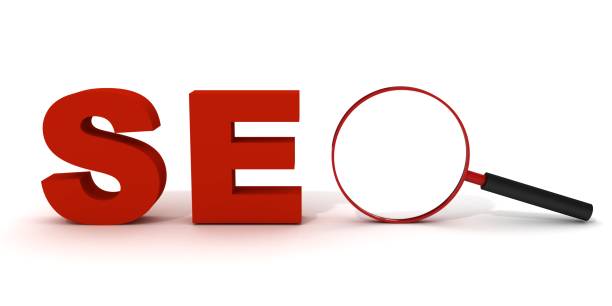
In today’s world, content that merely conveys information is no longer sufficient.
To succeed in On-Page SEO and maximize user attraction, you need to create thought-provoking and interactive content.
This type of content makes users think, engages them, and motivates them to share their opinions or stay longer on your site.
Thought-provoking content can take various forms: articles that challenge common assumptions, surveys and quizzes, case studies, or comparisons that encourage users to discuss and exchange ideas.
The goal is to initiate a conversation instead of merely providing information.
This approach indirectly positively impacts Google’s ranking factors such as dwell time, bounce rate, and user engagement.
To create thought-provoking and engaging content, you need a deep understanding of your audience.
What questions are on their minds? What challenges do they face? What topics excite them? By answering these questions, you can produce content that is not only useful but also sparks user curiosity.
Using data from keyword research tools to find Frequently Asked Questions (FAQ) and also user comments on social media or forums can be good sources for thought-provoking content ideas.
This type of content helps you strengthen your On-Page SEO by increasing user engagement, which is a positive signal for search engines.
Thought-provoking content not only attracts visitors but also converts them into loyal customers.
Are your online sales not as expected? With Rasaweb, solve the problem of low sales and poor user experience forever!
✅ Increase visitor-to-customer conversion rate
✅ Create a pleasant user experience and build customer trust
⚡ Act now for a free consultation!
Monitoring and Analyzing On-Page SEO Performance with Tools
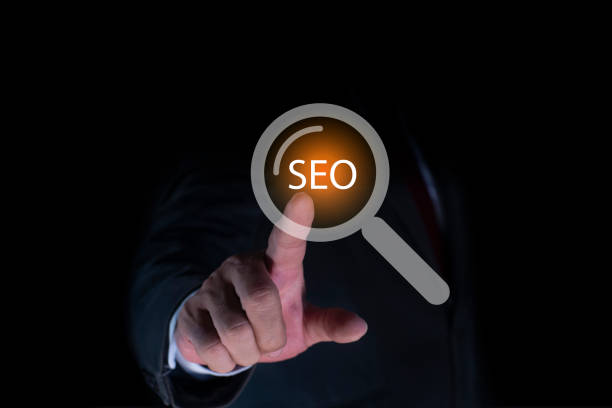
After implementing On-Page SEO strategies, continuous monitoring and performance analysis are essential to ensure their effectiveness and identify opportunities for improvement.
Various tools are available to help you track traffic, keyword rankings, crawling errors, and other important SEO metrics.
Google Analytics and Google Search Console are two powerful free tools that every webmaster should use.
Google Search Console provides you with precise information about how Google views your website.
You can see which keywords are attracting traffic, the average ranking of pages, indexing issues, crawl errors, and even security warnings.
This tool is specialized and highly valuable for identifying and resolving your site’s On-Page SEO and technical issues.
Google Analytics, on the other hand, provides deep insights into user behavior on your website.
You can see where users came from, how long they stayed on your site, which pages they visited, and which pages have high bounce rates.
By analyzing this data, you can identify weaknesses in your content or site design and improve them.
For example, if a page with high traffic has a high bounce rate, it might indicate that the content doesn’t address user intent or its On-Page SEO structure needs optimization.
Other tools like Ahrefs and Semrush also offer advanced analytical capabilities that allow you to analyze your competitors, discover new keywords, and manage your internal and external links.
Regular monitoring and adapting your On-Page SEO strategy based on data are key to sustained success in SEO.
This process is a data-driven approach for continuously improving your On-Page SEO.
Continuous Updates and New Challenges in On-Page SEO
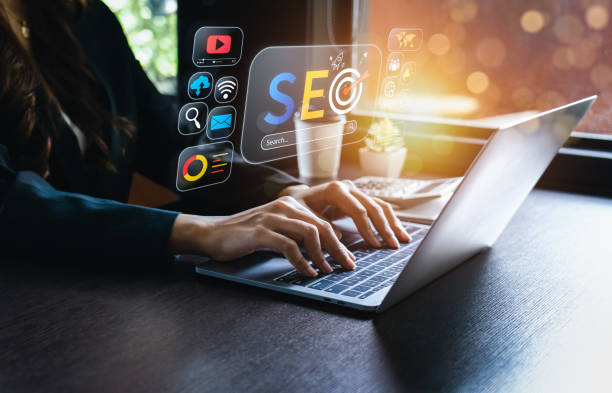
The world of SEO, especially On-Page SEO, is not static and is constantly changing and evolving.
Google’s algorithms are regularly updated, new technologies emerge, and user expectations also change.
Therefore, to maintain and improve your site’s ranking, continuously updating your On-Page SEO strategy is vital.
This includes reviewing old content to ensure its up-to-dateness, adding new information, improving On-Page SEO structure and internal links, and ensuring compliance with the latest Google guidelines.
New challenges in On-Page SEO include optimizing for voice search, AI-generated content, and Core Web Vitals.
Voice search requires focusing on longer keywords and more conversational content.
AI-generated content can be produced at high speed and volume, but for success in On-Page SEO, it must be ensured that this content is high quality, has real value and originality, and is not merely generated to fill pages.
Core Web Vitals (including Largest Contentful Paint, First Input Delay, and Cumulative Layout Shift) are new Google metrics for measuring user experience that directly impact ranking and should be considered in technical On-Page SEO optimization.
This is a news and specialized section that introduces you to the latest trends and challenges.
Following SEO industry news, studying specialized articles, and participating in webinars can help you stay a step ahead.
Remember that On-Page SEO is a continuous process, not a one-time project.
Flexibility and readiness to adapt to changes are key to long-term success in this field.
Frequently Asked Questions
| Question | Answer |
|---|---|
| What is On-Page SEO? | It refers to a set of actions performed within a website to improve its ranking in search engines. |
| Why is On-Page SEO important? | Because it helps search engines better understand your site’s content and structure and improves user experience. |
| What are the most important elements of On-Page SEO? | Title and meta descriptions, keywords, URL structure, quality content, image optimization, internal linking, and site speed. |
| How to optimize Title Tags and Meta Descriptions? | The title should include the primary keyword and be engaging, and the meta description should be a persuasive summary of the content with relevant keywords. |
| What is the role of keywords in On-Page SEO? | Keywords tell search engines what the page content is about and should be used naturally and intelligently within the text. |
| How is image optimization done for On-Page SEO? | By compressing size, using descriptive file names, and filling the Alt tag with relevant descriptions and keywords. |
| What is Internal Linking and what is its use? | It is connecting different pages of the site to each other. This helps distribute page authority and improve search engine crawling. |
| What is the importance of site loading speed in On-Page SEO? | High speed improves user experience and is an important ranking factor for search engines like Google. |
| How does site responsiveness (Mobile-Friendliness) affect On-Page SEO? | Given the increase in mobile users, responsiveness is essential for providing a suitable user experience across all devices and for Google’s mobile-first indexing. |
| What are the important content-related factors in On-Page SEO? | Originality, quality, comprehensiveness, readability, proper use of headings (H1, H2,…), and regular content updates. |
And other advertising services by Rasaweb Advertising Agency
Smart Conversion Rate Optimization: A fast and efficient solution for online growth focusing on Google Ads management.
Smart Link Building: Professional optimization for customer acquisition using key page optimization.
Smart Social Media: Designed for businesses seeking campaign management through precise audience targeting.
Smart Social Media: Professional optimization for digital branding using key page optimization.
Smart Marketing Automation: Professional optimization for sales growth using custom programming.
And over hundreds of other services in internet advertising, advertising consultation, and organizational solutions
Internet Advertising | Advertising Strategy | Advertorials
Resources
Advanced On-Page SEO TechniquesGuide to Increasing Site RankingImportance of On-Page SEO for Ranking ImprovementImportant Factors in Website Ranking
? Are you looking to elevate your business in the digital world? Rasaweb Afarin, specializing in responsive website design, SEO, and content marketing, offers innovative solutions for your online growth and prominence.
📍 Tehran, Mirdamad Street, next to Bank Markazi, Kazeroon Janubi Alley, Ramin Alley, No. 6

